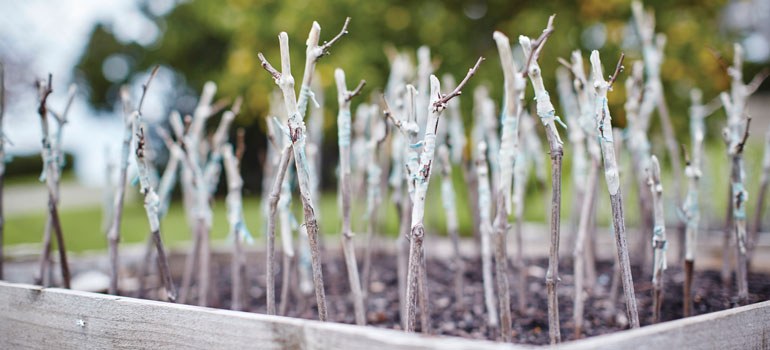How do compounds in grape berries contribute to the final aroma and flavour characteristics of wine? And, in turn, what is the genetic basis for the production of these compounds? It’s long been a conundrum for researchers.
Now, a CSIRO Agriculture and Food team has made great progress in producing molecular markers for consumer traits such as ‘fruity', ‘green’ and ‘floral', using a variety of methods and germplasm populations.
The findings from the Wine Australia-funded research will see a streamlining of the breeding process of new winegrape varieties that are not only disease-resistant – but that also have sensory traits that are appealing to consumers.
“Understanding how positive and negative sensory attributes are controlled genetically in grapes will enable the development of markers to select for specific traits or to eliminate those with potentially negative attributes at the seedling stage,” said CSIRO Principal Research Scientist, Dr Paul Boss.
This would save both time and vineyard space in the breeding process – and improve the value of wines produced from new disease-resistant cultivars.

“We will be able to assess the potential wine quality of new varieties without the need for small scale winemaking and sensory analysis, making the whole process faster and less expensive,” Paul said.
“Another long-term aim of the research has been to use the genetic knowledge gained to improve the understanding of the biochemistry behind the expression of these traits in grapes and wine. CSIRO’s unique approach analyses volatile compounds in the wine produced, as well as in the grape. This adds to the existing research into how wine flavour and aroma is influenced by various inputs and results in great outcomes for consumers.
“This will ultimately be linked to viticultural interventions so wine styles can be effectively tailored in the vineyard.”
Paul said the project has meant that new varieties can be easily scored for the following traits: acylated (stable) anthocyanins; methoxypyrazine production in berries (green capsicum aroma); α-guaiene production (rotundone (pepper aroma) precursor); red-fleshed berries; and (Z)-3-hexenol concentration in wine (green/leafy aroma).

“Our research has also generated a number of what are known as ‘quantitative trait loci’ (QTLs), which indicate which regions of the grape genome are important for determining other traits of interest.
“We have also developed a number of genetic resources such as mapping populations, genetic maps and thousands of DNA markers across 175 different varieties. These can be used for years in breeding programs or projects on genetic control of vine phenology or grape composition.”
Paul said the project has significantly enhanced the Australian wine sector’s capability to conduct research into grape genetics and consumer traits.
“We have established a methodological pipeline for genetic and genomic studies in grapevines, which can be used in the future to target consumer traits in any germplasm selection.”
